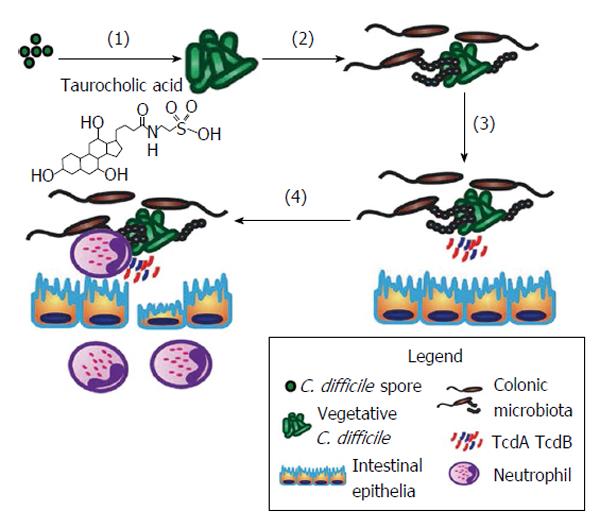Copyright
©The Author(s) 2015.
World J Gastrointest Pathophysiol. Nov 15, 2015; 6(4): 169-180
Published online Nov 15, 2015. doi: 10.4291/wjgp.v6.i4.169
Published online Nov 15, 2015. doi: 10.4291/wjgp.v6.i4.169
Figure 1 Pathogenesis of Clostridium difficile infections.
Clostridium difficile (C. difficile) spores are ingested and pass through the stomach, upon which they can interact with taurocholate within the small intestine and germinate into vegetative cells (1); Vegetative cells then colonize within the gut microbiota (2) and begin to produce toxins, TcdA and TcdB (3); Toxins cause epithelial damage and pro-inflammatory cytokine release, leading to infiltration of neutrophils that cause pseudomembranous colitis (4).
-
Citation: Schenck LP, Beck PL, MacDonald JA. Gastrointestinal dysbiosis and the use of fecal microbial transplantation in
Clostridium difficile infection. World J Gastrointest Pathophysiol 2015; 6(4): 169-180 - URL: https://www.wjgnet.com/2150-5330/full/v6/i4/169.htm
- DOI: https://dx.doi.org/10.4291/wjgp.v6.i4.169









